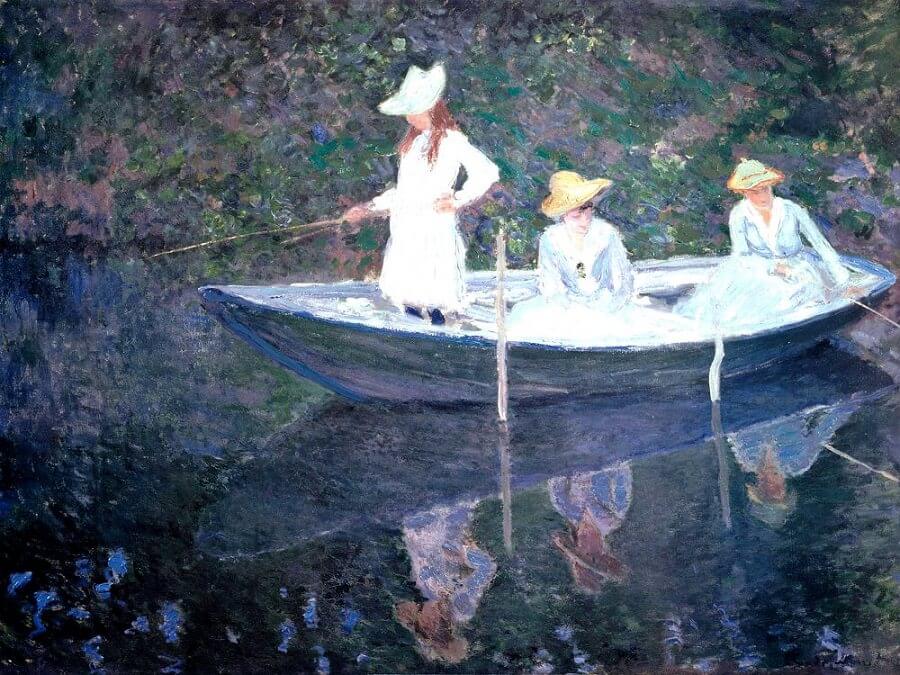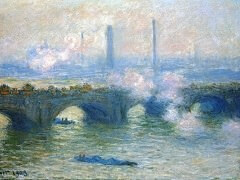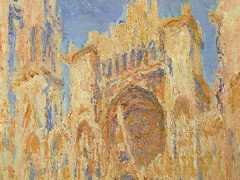The Boot at Giverny, 1877 - by Claude Monet

Having turned away from including figurative elements in his landscape painting for some years, in 1886 Monet began to reintroduce them, most notably in two paintings of Alice's daughter Suzanne. The impetus for this change is unclear, but it may possibly have been connected to the increasing stability he felt with his 'new' family, who now provided the focus that had previously been centred on his first wife Camille,
In 1887-88 he painted at least six large canvases depicting Alice's daughter's boating, a return to one of Monet's earlier subjects undertaken at Argenteuil. The Giverny paintings are quite different, however, both stylistically and in structure. Here the artist presents the figures as individuals rather than shadowy, light-bathed silhouettes, and they take on the fullness of a living entity. The composition, and that of the other booting paintings, with its oblique angle and intense colors, reveals the influence of Japanese woodcuts. Like Van Gogh, Monet admired these Oriental works and had quite a collection of authentic Japanese works. This pointing is almost Symbolist in its dreamy, ethereal atmosphere and gives the impression of an enclosed and private world.




















